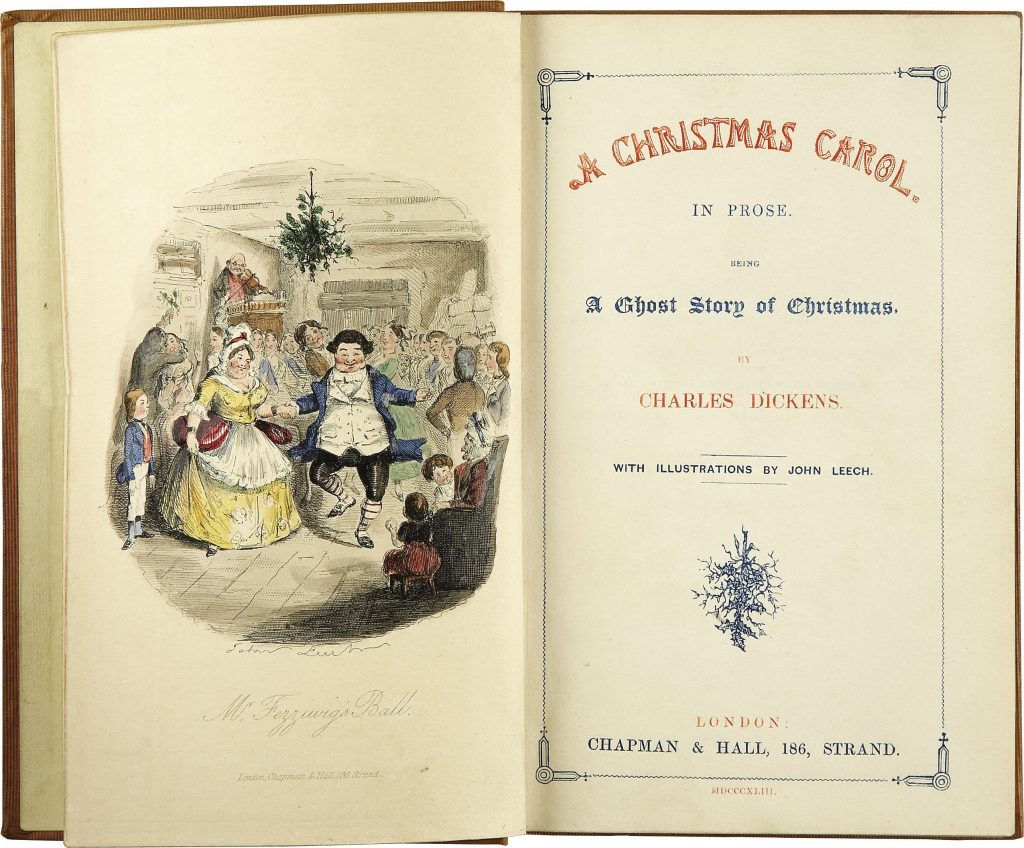Nearly every TV Christmas special and Christmas movie indirectly or directly descends from A Christmas Carol, Charles Dickens’ 1843 novel about Ebenezer Scrooge, Tiny Tim, and the Ghosts of Christmas past, present, and future. Here’s a deeper dive into the most influential Christmas story of them all.

SOUNDS FAMILIAR
Dickens wrote the novel in just six weeks, which seems impossible…except for the fact that he could pull from a similar story he’d written years earlier. The author’s first published novel, The Pickwick Papers in 1836 featured a story called “The Story of the Goblins Who Stole a Sexton.” It concerns a grumpy miser named Gabriel Grubb who is visited by ghosts on Christmas, which transforms him into a gentler person.
A NEW STAGE
It didn’t take long for a theatrical version of A Christmas Carol to emerge. English playwright Edward Stirling adapted it for the London stage, where it played for 40 nights to big crowds before it moved on to New York City. (That means people happily paid to watch A Christmas Carol in January and February.)
FRED ‘TIL THE END
Before he decided on “Tiny Tim,” the impoverished, sick Cratchit boy who breaks through Scrooge’s cold demeanor, was initially named Little Fred. Just before the book went to the printer, Dickens changed it.
GOING THROUGH A PHRASE
One wouldn’t think a phrase as common and obvious as “Merry Christmas” would need to be coined, but it was. A Christmas Carol popularized the expression; before then, the general Christmas greeting in the U.S. and U.K. was the blander “Happy Christmas.”
EXTRA CHRISTMAS MONEY
While the book is full of Christmas spirit, Dickens’ initial reasons for A Christmas Carol were practical. In late 1843, his wife was pregnant with their fifth child and they barely had enough money to survive (making Dickens a decidedly Bob Cratchit-like figure). His books weren’t selling very well, so he wrote a holiday story as a cash grab. However, Dickens wound up being so proud of the book that when his publisher refused to print it, he paid for the publication himself. And then, to make sure as many people as possible could read it, he charged only five shillings a copy, about half of what he could’ve sold it for.
AS SEEN ON TV
It’s been adapted for TV and film a number of times. Among the more innovative versions: a 1979 musical with an all African-American cast called Comin’ Uptown, a mime version produced for the BBC in 1973 (starring Marcel Marceau), 1992’s Muppet Christmas Carol, and the very first screen version, a silent movie from 1901 called Scrooge; or, Marley’s Ghost.







